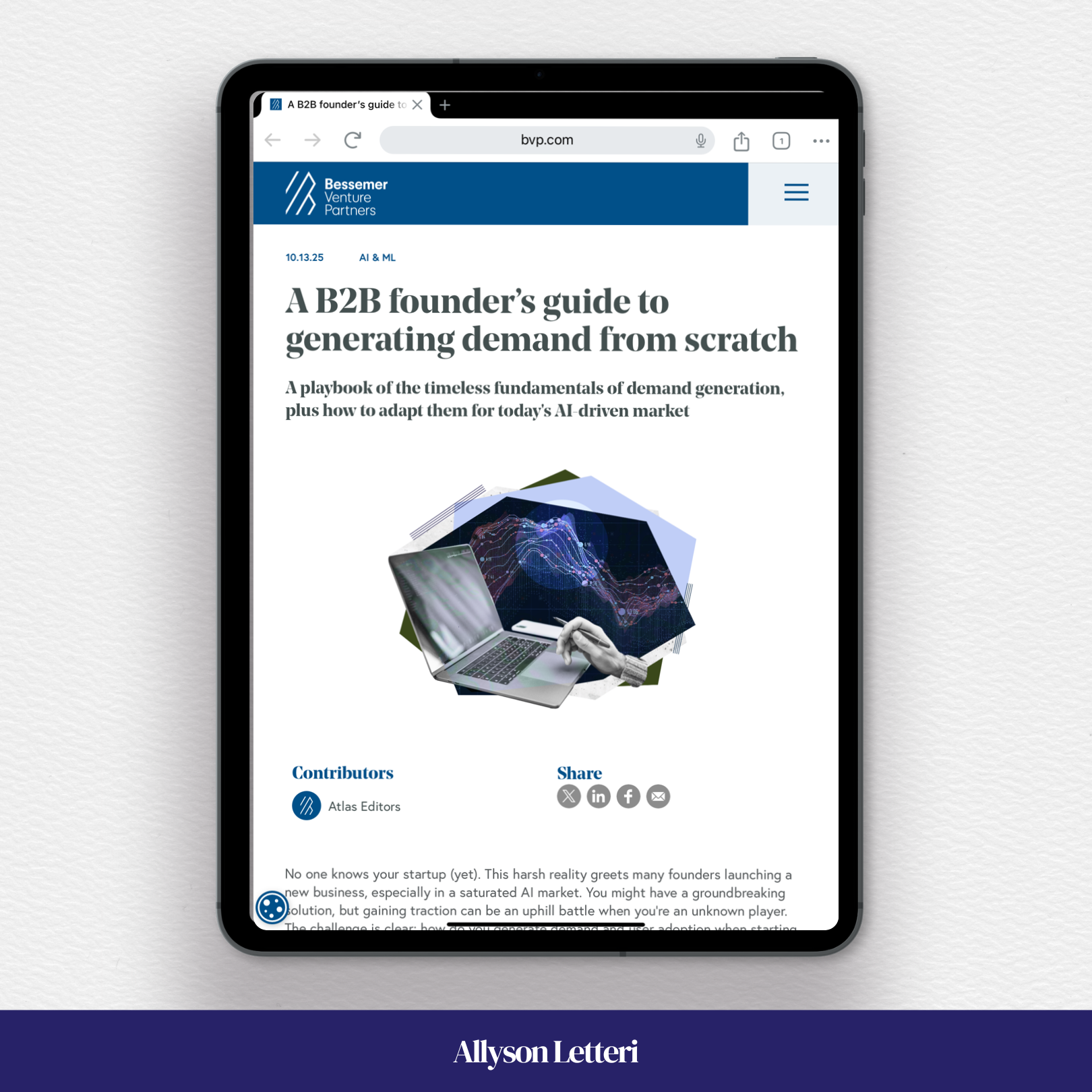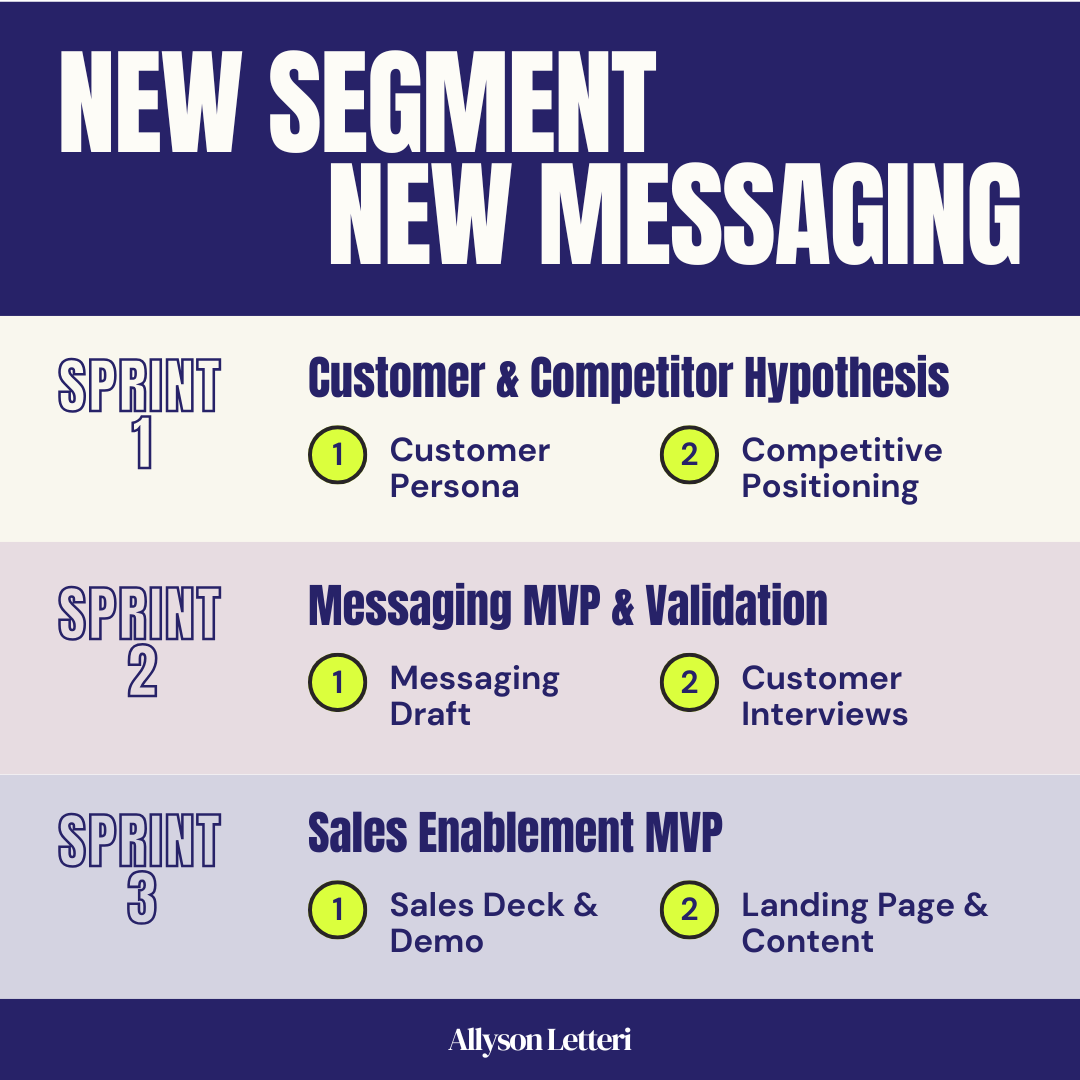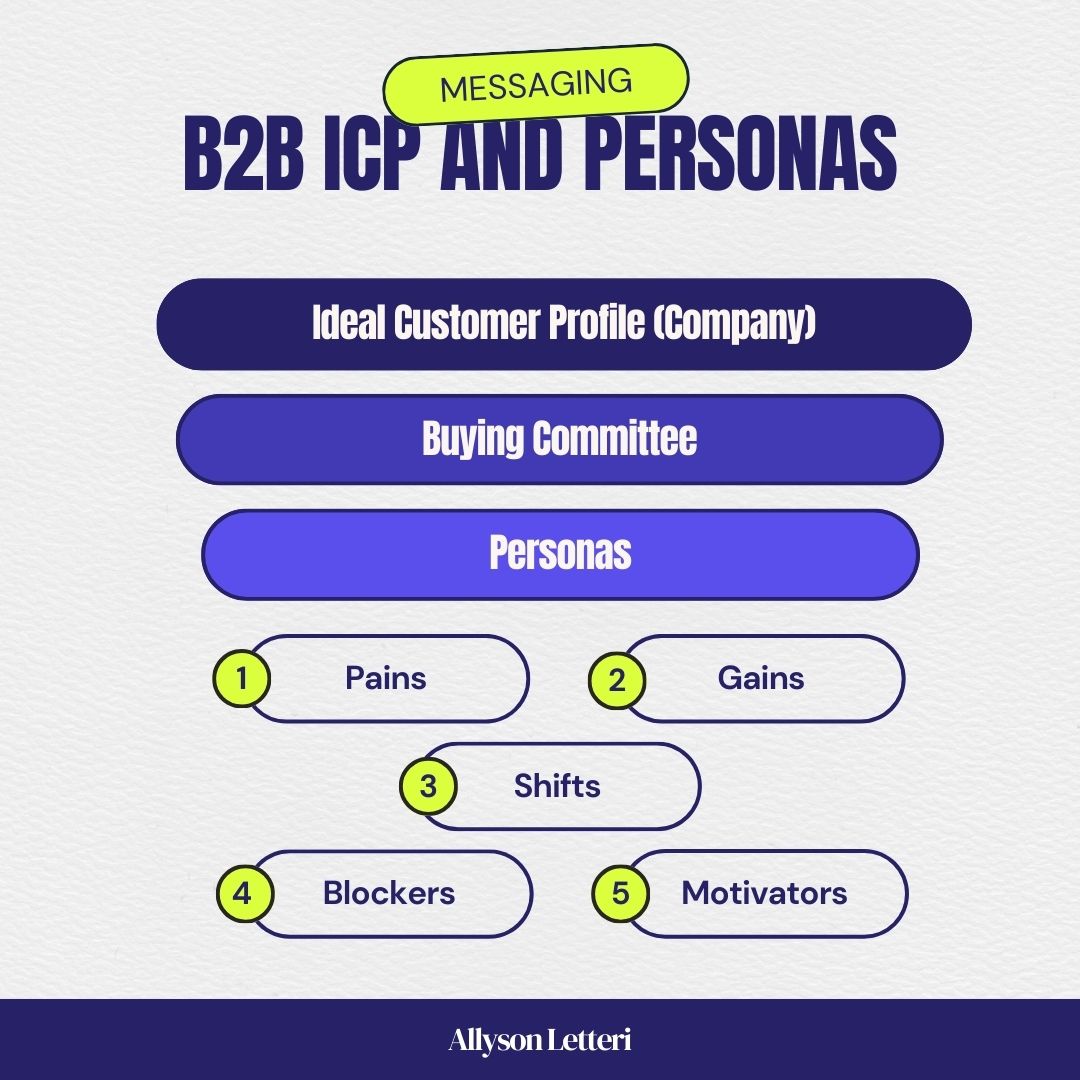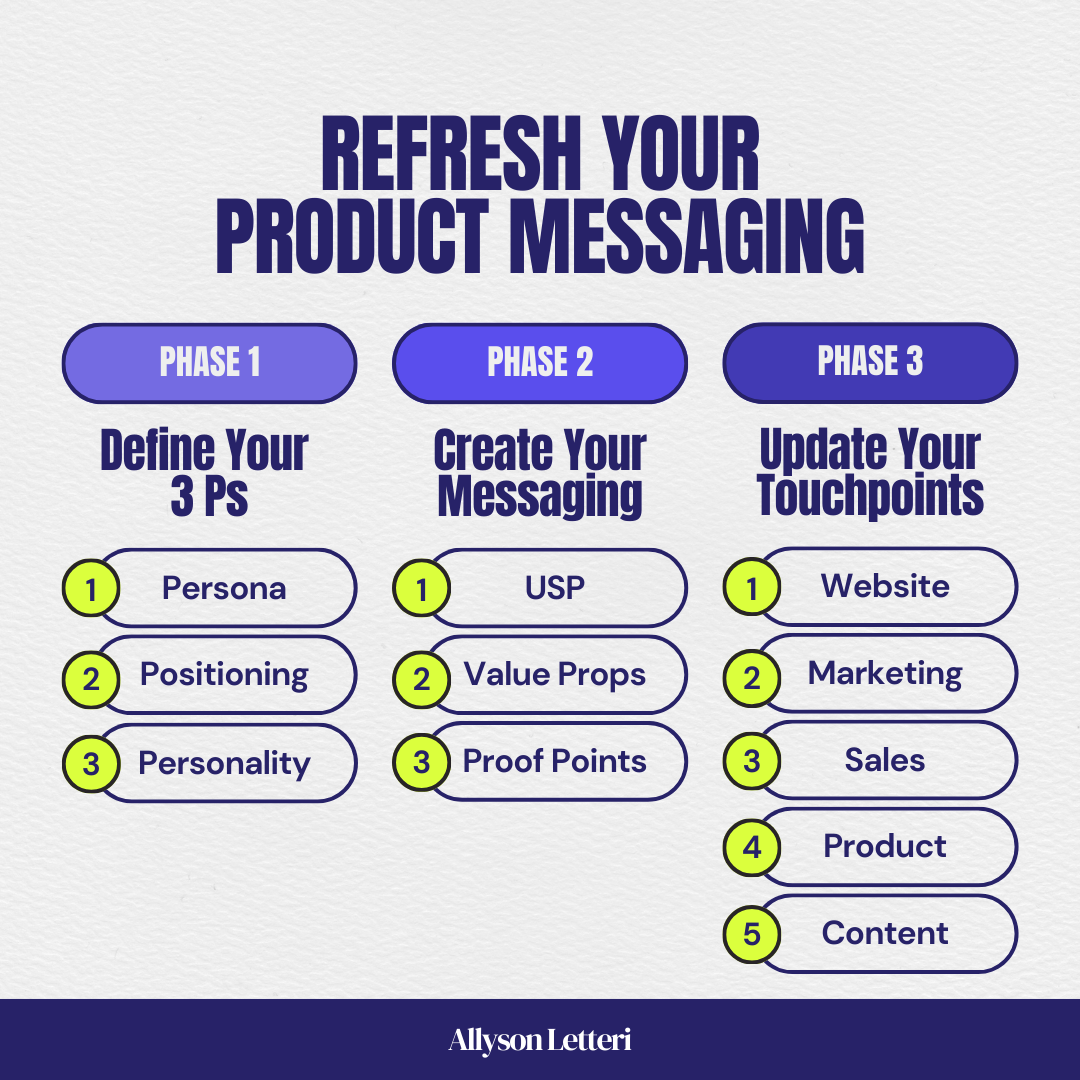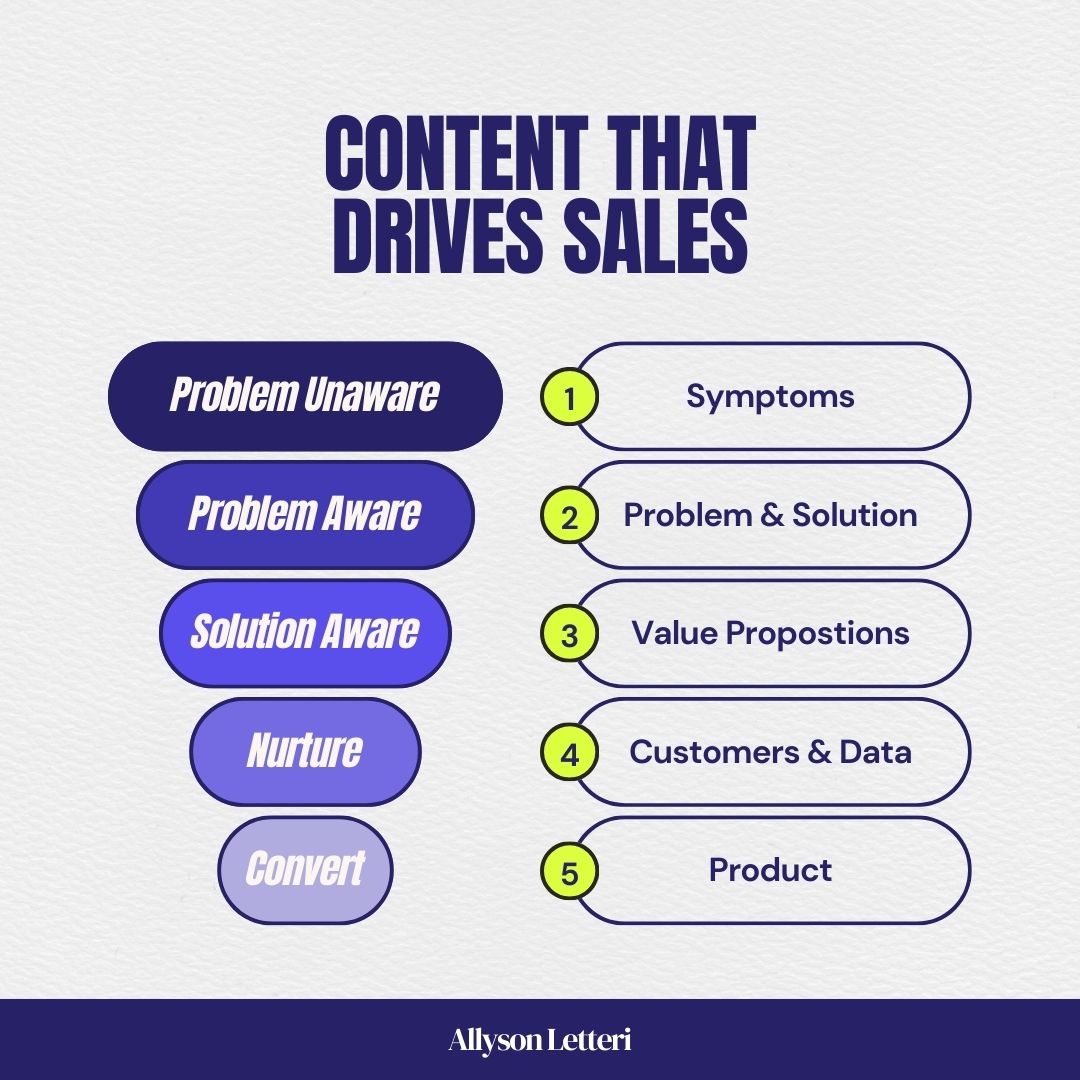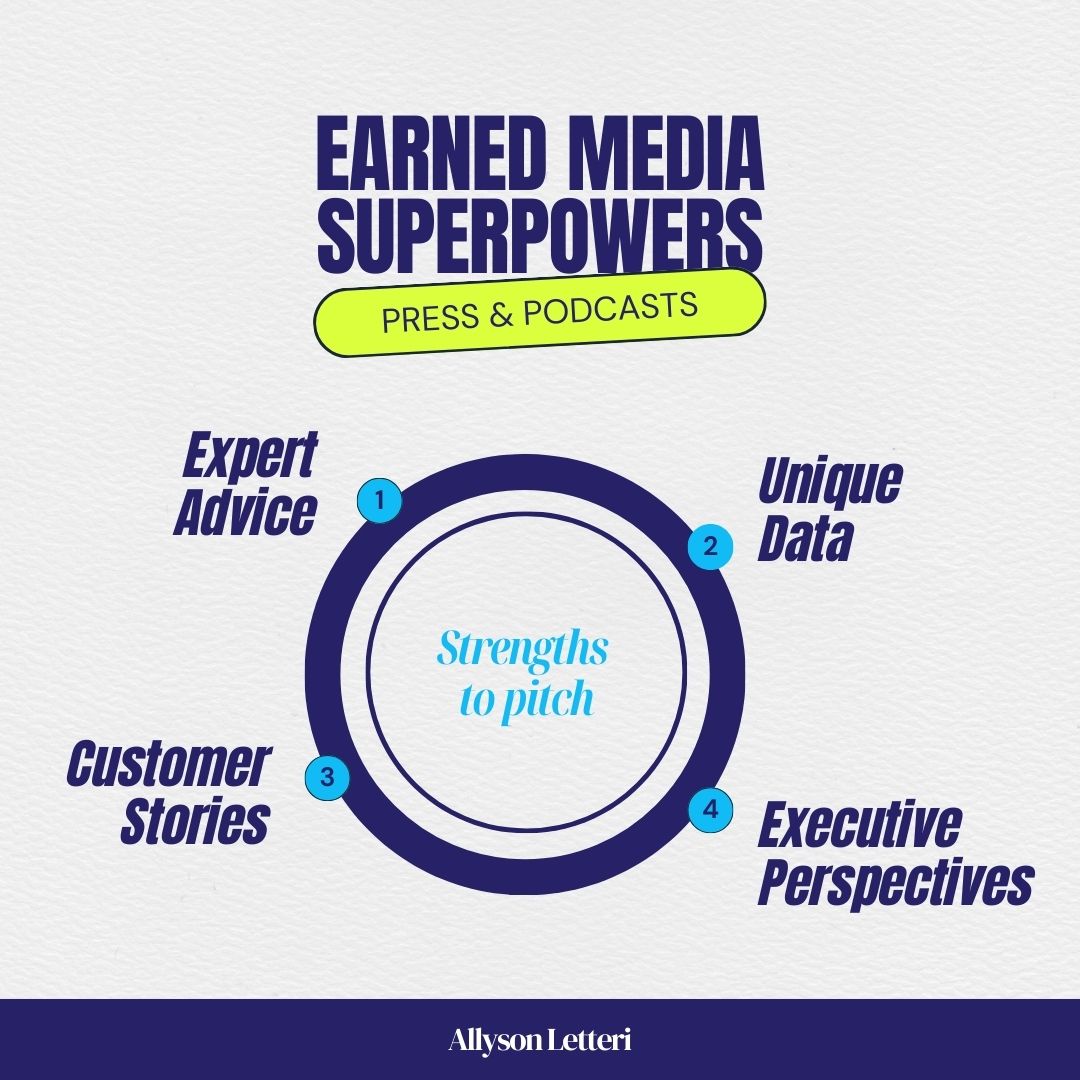A FOUNDER ASKED:
“We want to sell our current product to a new customer segment. How can we quickly create the right messaging and materials for sales?”
NEW SEGMENTS ARE A KEY GROWTH LEVER
This is a smart and critical question for startups expanding beyond their initial wedge of product-market fit.
But the pressure is real: you need to start selling before you fully understand the segment—or know what messaging will actually land.
You’re getting ready to kick off sales conversations, so you need an MVP set of materials: a sales deck, email copy, and content that speaks directly to this audience.
But first, you have to answer some critical questions:
- What makes our product valuable to these customers?
- What should we say to catch their attention?
- What needs to change from our current messaging?
It can feel like a chicken-and-egg problem.
You want to validate your message through conversations, but you don’t want to start those conversations without effective messaging.
Here’s my advice:
Before you build collateral or book sales meetings, create MVP messaging tailored to this new segment. Then build a starter kit of content to support strong initial conversations. This way, you’ll learn faster—and your early outreach will land better.
Here’s how to do it in three focused sprints.
SPRINT 1: BUILD CUSTOMER AND COMPETITOR HYPOTHESES
Start by organizing what you already know about the market and identifying what you need to learn.
First, define three layers:
- Ideal Customer Profile (ICP): What are the characteristics of your best-fit companies in this new segment?
- Buying Committee: Who participates in the buying decision at these companies?
- Primary Persona: Who’s your primary buyer and internal champion? They’ll be the focus of your new messaging.
(For a full refresher, I break down how to create effective ICPs and personas here. Go beyond firmographics and demographics—you need to understand your new persona’s functional, emotional, and social pain points.)
Second, sharpen your view of the competitive landscape:
- Who are your direct competitors?
- Who are the indirect competitors (low-tech options, build in-house, or “do nothing”)?
- How do they position themselves—and why does it resonate?
- How is your product different and better?
Identify your biggest differentiators to create a strong contrast with your leading competitors. Insights about your persona and positioning shape your core messaging themes.
Sprint 1 goals:
- Synthesize your persona and buying committee insights
- Identify competitors and positioning angles
- Highlight knowledge gaps to fill in Sprint 2
This isn’t about getting it perfect. Aim for a 70% hypothesis—just enough to move forward with confidence.
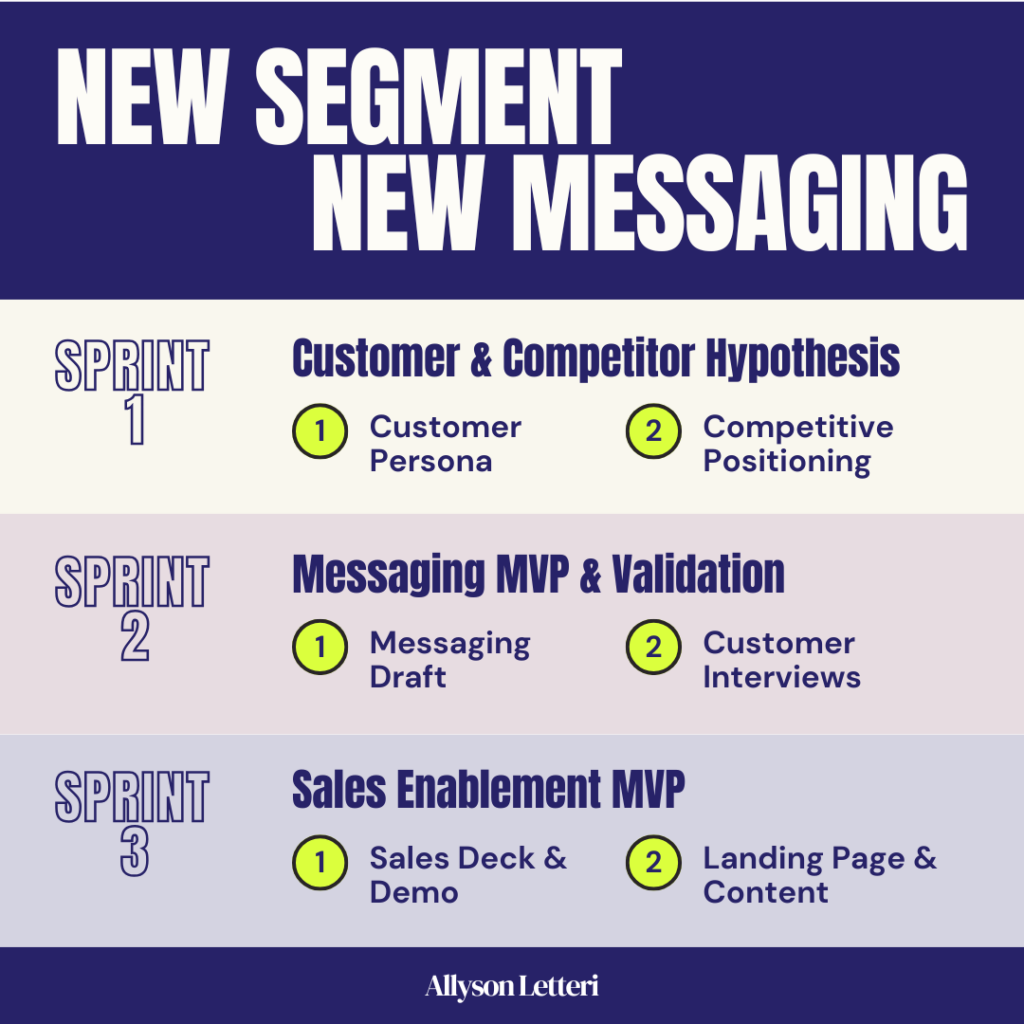
SPRINT 2: BUILD A MESSAGING MVP AND VALIDATE
Now you’ll move into messaging creation, research, and quick iteration. This sprint gets you ready to build MVP collateral in Sprint 3.
Part A: Draft Your Messaging MVP
Start with a simple but powerful product messaging framework:
- USP: “[Product] is a [category] for [customer segment] that delivers [outcome].”
- Three value proposition pillars that describe your product’s unique benefits
- Proof points that back up your claims (features, data, testimonials, press)
(Here’s where you can get all the details on how to develop effective messaging.)
Pro tip: Start value props with action verbs (save, boost, eliminate) and descriptors (fast, easy, smart). This helps your product benefits stand out.
Watch out: A feature list isn’t a compelling message. Your prospect wants to know why your product is valuable. Features are proof points—they show how your product delivers benefits.
Part B: Run Customer Interviews
Take your draft messaging into real conversations with ideal customers to see what lands—and what doesn’t.
Use these interviews to:
- Fill gaps in your understanding of the ICP company and persona
- Spot what’s unclear or unconvincing
- Compare how your positioning stacks up against competitors
You don’t need a polished deck for these calls. A few simple slides, a draft landing page, or a set of talking points will do the job.
Ask:
- Does the USP and category resonate?
- Which value props feel most compelling? Least compelling?
- How does your product compare to others they’re considering?
- What questions or hesitations come up?
- What would make the decision to buy more urgent?
Also ask questions to refine your ICP and persona. Gather insights on this customer’s pain points, desired results, objections, and decision-making process.
Then, revise your messaging to reflect what you’ve learned. This new segment needs to see your product as appealing, effective, and differentiated.
Sprint 2 goals:
- Finalize your messaging wireframe for MVP collateral
- Refine your USP and value props based on real feedback
- Strengthen proof points to build trust
STEP 3: CREATE MVP SALES AND MARKETING ASSETS
Now shift from testing to selling. The goal is to equip your team with clear messaging and essential content to run real sales conversations.
Build a simple sales enablement kit:
- A short sales deck (USP → Value Props → Proof Points)
- A landing page with your refined messaging
- A relevant case study, if you have one that fits this segment
- A short demo video tailored to this audience
- 2–3 nurture content pieces to support the buyer journey
Make sure your content maps to the stages of the buyer journey:
- Awareness: Describe the problem your product solves, and why it matters
- Consideration: Showcase benefits and differentiators
- Decision: Offer proof—customer stories, measurable outcomes, product walkthroughs, and more details on features
(If you’ve read my guide to scaling founder-led sales, you know great content builds trust and speeds up deals.)
Key tips:
- Use a clear narrative flow: USP → Value → Proof
- Make sure your content answers real buyer questions
Sprint 3 goals:
- Brief your team on new customer and competitor insights
- Equip sales with messaging for early conversations
- Build MVP collateral to enable initial sales
BETTER MARKET ENTRY IN THREE SPRINTS
Startups often skip messaging validation and jump straight to selling. That leads to:
- Unclear benefits → meetings that fall flat
- Weak differentiation → lost deals
- No proof → prospects that stall
This approach gives you an edge by:
- Building early empathy with a new customer segment
- Clarifying your message before investing in product, sales, or marketing
- Helping your team show up with confidence and credibility
You don’t need a polished website, a polished demo, or a perfect product. You need:
- Clear ICP and persona insights
- Sharp positioning against alternatives
- MVP content that earns attention and builds trust
That’s how you move from guessing at a new market to getting early traction.
